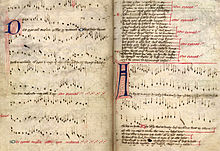
The Bodleian Library is the main research library of the University of Oxford, and is one of the oldest libraries in Europe. It derives its name from its founder, Sir Thomas Bodley. With over 13 million printed items, it is the second-largest library in Britain after the British Library. Under the Legal Deposit Libraries Act 2003, it is one of six legal deposit libraries for works published in the United Kingdom, and under Irish law it is entitled to request a copy of each book published in the Republic of Ireland. Known to Oxford scholars as "Bodley" or "the Bod", it operates principally as a reference library and, in general, documents may not be removed from the reading rooms.

A Christmas carol is a carol on the theme of Christmas, traditionally sung at Christmas itself or during the surrounding Christmas holiday season. The term noel has sometimes been used, especially for carols of French origin. Christmas carols may be regarded as a subset of the broader category of Christmas music.

John Selden was an English jurist, a scholar of England's ancient laws and constitution and scholar of Jewish law. He was known as a polymath; John Milton hailed Selden in 1644 as "the chief of learned men reputed in this land".

John Dunstaple was an English composer whose music helped inaugurate the transition from the medieval to the Renaissance periods. The central proponent of the Contenance angloise style, Dunstaple was the leading English composer of his time, and is often coupled with William Byrd and Henry Purcell as England's most important early music composers. His style would have an immense influence on the subsequent music of continental Europe, inspiring composers such as Du Fay, Binchois, Ockeghem and Busnois.

The Winchester Troper refers to two eleventh-century manuscripts of liturgical plainchant and two-voice polyphony copied and used in the Old Minster at Winchester Cathedral in Hampshire, England. The manuscripts are now held at Cambridge, Corpus Christi College 473 and Oxford, Bodleian Library Bodley 775 . The term "Winchester Troper" is best understood as the repertory of music contained in the two manuscripts. Both manuscripts contain a variety of liturgical genres, including Proper and Ordinary chants for both the Mass and the Divine Office. Many of the chants can also be found in other English and Northern French tropers, graduals, and antiphoners. However, some chants are unique to Winchester, including those for local saints such as St. Æthelwold and St. Swithun, who were influential Bishops of Winchester in the previous centuries. Corpus 473 contains the most significant and largest surviving collection of eleventh-century organum. This polyphonic repertoire is unique to that manuscript.

"Adam lay ybounden", originally titled Adam lay i-bowndyn, is a 15th-century English Christian text of unknown authorship. It relates the Biblical events of Genesis, Chapter 3 on the Fall of Man.

"I syng of a mayden" is a Middle English lyric poem or carol of the 15th century celebrating the Annunciation and the Virgin Birth of Jesus. It has been described as one of the most admired short vernacular English poems of the late Middle Ages.

The Agincourt Carol is an English folk song written some time in the early 15th century. It recounts the 1415 Battle of Agincourt, in which the English army led by Henry V of England defeated that of the French Charles VI in what is now the Pas-de-Calais region of France.

"Resonet in laudibus" is a 14th-century Christmas carol which was widely known in medieval Europe, and is still performed today. Although probably earlier, in manuscript form it first appears in the Moosburg gradual of 1360 and occurs in several 15th, 16th and 17th century printed collections from both Catholic and Lutheran traditions.

"In dulci jubilo" is a traditional Christmas carol. In its original setting, the carol is a macaronic text of German and Latin dating from the Middle Ages. Subsequent translations into English, such as J. M. Neale's arrangement "Good Christian Men, Rejoice" have increased its popularity, and Robert Pearsall's 1837 macaronic translation is a mainstay of the Christmas Nine Lessons and Carols repertoire. J. S. Bach's chorale prelude based on the tune is also a traditional postlude for Christmas services.
John Audelay was an English priest and poet from Haughmond Abbey, in Shropshire; one of the few English poets of the period whose name is known to us. Some of the first Christmas carols recorded in English appear among his works.
Oxford, Bodleian Library, Rawlinson B 502 is a medieval Irish manuscript which presently resides in the Bodleian Library, Oxford. It ranks as one of the three major surviving Irish manuscripts to have been produced in pre-Norman Ireland, the two other works being the Lebor na hUidre and the Book of Leinster. Some scholars have also called it the Book of Glendalough, in Irish Lebar Glinne Dá Locha, after several allusions in medieval and early modern sources to a manuscript of that name. However, there is currently no agreement as to whether Rawlinson B 502, more precisely its second part, is to be identified as the manuscript referred to by that title.

The Anglo-Saxon Chronicle is a collection of annals in Old English, chronicling the history of the Anglo-Saxons.

"Puer nobis nascitur", usually translated as "Unto Us Is Born a Son", is a medieval Christmas carol found in a number of manuscript sources—the 14th-century German Moosburg Gradual and a 15th-century Trier manuscript. The Moosburg Gradual itself contained a number of melodies derived from the 12th- and 13th-century organum repertories of Notre Dame de Paris and the Abbey of Saint Martial, Limoges, suggesting that its antiquity may be much greater.

The Digital Image Archive of Medieval Music (DIAMM) is an online database of all European polyphonic music sources before 1550. Founded in 1998, it is based in Oxford and maintained by the University of Oxford's Music Faculty and the Bodleian Library.

The Trinity Carol Roll is a 15th-century manuscript of thirteen English carols held by the Wren Library at Trinity College, Cambridge. It is the earliest surviving example of polyphonic music written in English. Compiled after 1415, it contains the earliest of two manuscript sources for the Agincourt Carol which tells of Henry V's victory at the Battle of Agincourt, as well as several early Christmas carols. The majority of texts are in Middle English with some of the carols alternating between Latin and Middle English, a common form for carols of the period known as macaronic.

Music in Medieval England, from the end of Roman rule in the fifth century until the Reformation in the sixteenth century, was a diverse and rich culture, including sacred and secular music and ranging from the popular to the elite.
The Lyell Readership in Bibliography is an endowed annual lecture series given at the University of Oxford. Instituted in 1952 by a bequest from the solicitor, book collector and bibliographer James Patrick Ronaldson Lyell (1871–1948), the series has continued down to the present day. Together with the Panizzi Lectures at the British Library and the Sandars Lectures at Cambridge University, it is considered one of the major British bibliographical lecture series.
"Maiden in the mor lay" or "The Maid of the Moor" is a Middle English lyric of the early 14th century, set to a melody which is now lost. The literary historian Richard L. Greene called it "one of the most haunting lyrics of all the Middle Ages", and Edith Sitwell thought it "a miracle of poetry". It is a notoriously enigmatic poem, perhaps devotional, perhaps secular, which depicts a maiden in the wilderness who lives on flowers and spring-water. Critics are divided in their interpretation of her: she may be the Virgin Mary, Mary Magdalene, a water-sprite, or an ordinary human girl. The 14th-century bishop Richard de Ledrede's dissatisfaction with this song led to an alternative lyric for it being written, a Latin religious poem, Peperit virgo.
Oxford, Bodleian Library, MS Fairfax 16, also known as the Fairfax Manuscript, is a fifteenth-century Middle English poetic anthology which contains one of the finest collections of Chaucerian verse of this period. Owned and commissioned by John Stanley of Hooton, Cheshire, Fairfax 16 was produced in Oxford or London in the mid-fifteenth century. Thomas Fairfax bequeathed it to the Bodleian Library in 1671.














